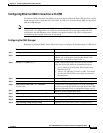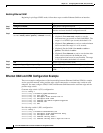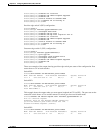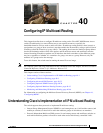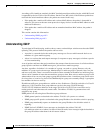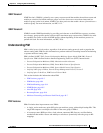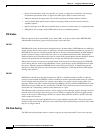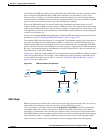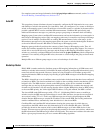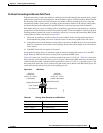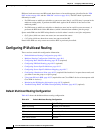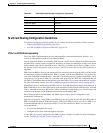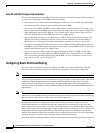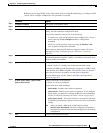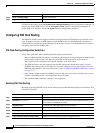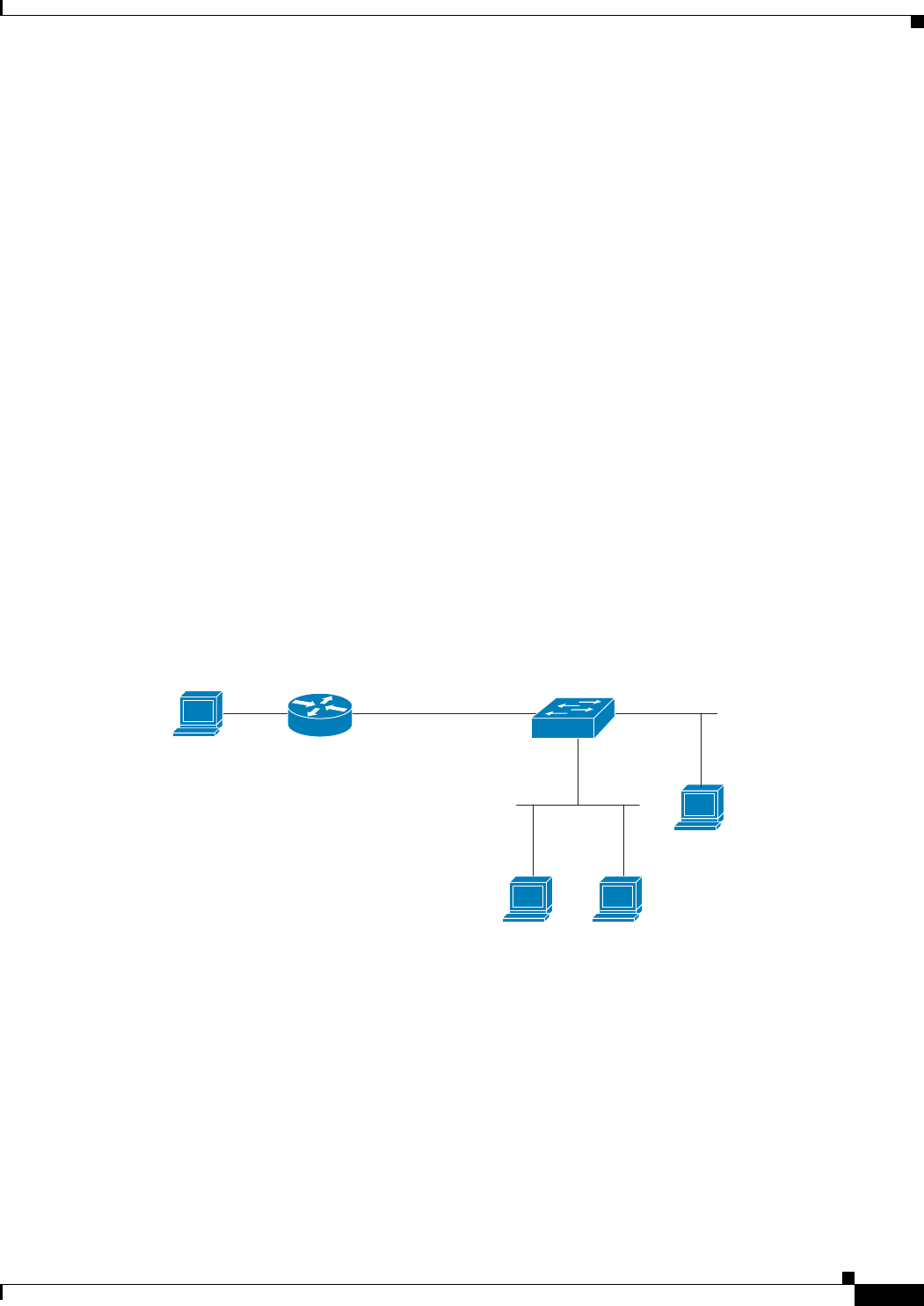
40-5
Cisco ME 3400 Ethernet Access Switch Software Configuration Guide
OL-9639-06
Chapter 40 Configuring IP Multicast Routing
Understanding Cisco’s Implementation of IP Multicast Routing
In a network using PIM stub routing, the only allowable route for IP traffic to the user is through a switch
that is configured with PIM stub routing. PIM passive interfaces are connected to Layer 2 access
domains, such as VLANs, or to interfaces that are connected to other Layer
2 devices. Only directly
connected multicast (IGMP) receivers and sources are allowed in the Layer 2 access domains. The PIM
passive interfaces do not send or process any received PIM control packets.
When using PIM stub routing, you should configure the distribution and remote routers to use IP
multicast routing and configure only the switch as a PIM stub router. The switch does not route transit
traffic between distribution routers. You also need to configure a routed uplink port on the switch. The
switch uplink port cannot be used with SVIs. If you need PIM for an SVI uplink port, you should upgrade
to the IP services feature set.
You must also configure EIGRP stub routing when configuring PIM stub routing on the switch. For more
information, see the
“Configuring EIGRP Stub Routing” section on page 35-41.
The redundant PIM stub router topology is not supported. The redundant topology exists when there is
more than one PIM router forwarding multicast traffic to a single access domain. PIM messages are
blocked, and the PIM assert and designated router election mechanisms are not supported on the PIM
passive interfaces. Only the nonredundant access router topology is supported by the PIM stub feature.
By using a nonredundant topology, the PIM passive interface assumes that it is the only interface and
designated router on that access domain.
In Figure 40-1, Switch A routed uplink port 25 is connected to the router and PIM stub routing is enabled
on the VLAN 100 interfaces and on Host 3. This configuration allows the directly connected hosts to
receive traffic from multicast source 200.1.1.3. See the
“Configuring PIM Stub Routing” section on
page 40-12 for more information.
Figure 40-1 PIM Stub Router Configuration
IGMP Helper
PIM stub routing moves routed traffic closer to the end user and reduces network traffic. You can also
reduce traffic by configuring a stub router (switch) with the IGMP helper feature.
You can configure a stub router (switch) with the igmp helper help-address interface configuration
command to enable the switch to send reports to the next-hop interface. Hosts that are not directly
connected to a downstream router can then join a multicast group sourced from an upstream network.
The IGMP packets from a host wanting to join a multicast stream are forwarded upstream to the next-hop
device when this feature is configured. When the upstream central router receives the helper IGMP
reports or leaves, it adds or removes the interfaces from its outgoing interface list for that group.
Source
200.1.1.3
Router
3.1.1.2.255.255.255.0
Switch
A
Host 1 Host 2
VLAN 100 Host 3
Port 25 Port 20
202361



